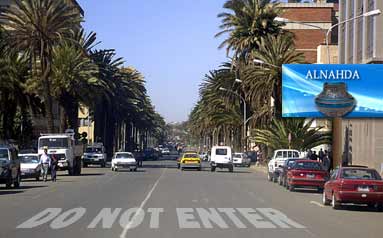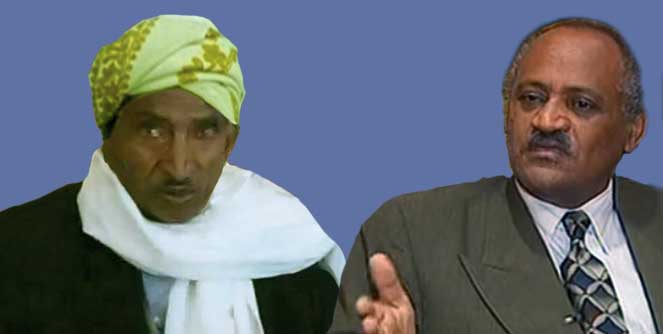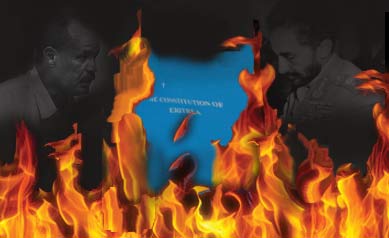My Understanding Of A National Conference
A national conference that measures up to its name should reflect the compatibility of that with the composition of its participants, the goals and tasks set, the results achieved and the mechanism and means adopted. Reality is so complex to squeeze and fit into a rigid pattern or criteria set ahead. Thus allowance should be made for any deviation from the ideal picture held. Having stated that, this is neither meant to comprise on the requirements nor to undermine the gravity of the event and in no way to justify any committed or anticipated defects in the process. Many have awaited patiently for an opportunity that such a conference would offer. A forum for all individuals or national forces concerned to discuss openly and thoroughly, face to face, their national worries and hopes with the purpose of reaching a common understanding and finding proper durable solutions. The aim is to lay down on a consensual basis the basic national principles that should rule and bind all; set short and long time plans and goals that are required to facilitate the democratic changes aspired. And make structural changes that enhance the proficiency and efficiency of EDA and modify it into a stronger organisation. Certainly a lot is expected out of the conference but let us be objective and practical taking into consideration the limits of any conference, the magnitude of the tasks and the problems to be tackled. We should lower the levels of our expectation to a reasonable one to avoid any unnecessary disappointments.
Many people have expressed their worries openly, others reserve that to themselves. These are concerns about the time needed for proper preparations, the adequate participations and involvements required, the transparency of the agenda and the final results to be attained. The reasons behind these worries are different. Some stem out from genuine and sound motives and concerns related to the success of the conference and I hope those are seriously taken and given all deserved attention by the preparatory committee and the sponsoring body, EDA. Others arise from the fear that the conference could be an orchestrated event by EDA’s ten-member group aiming at resolving an internal power struggle in their favour (against EPDP). The main purpose of which is seeing to furnish a popular support and legality needed for EDA to exclusively promote its hidden agenda (in collaboration with Ethiopia). This group reckons its being denied an inalienable right to lead as a more qualified and politically mature group than the others. They are not ready to for the modest role of a partner that have to share the same responsibilities and duties in equal footing with the other EDA members. Such non-comprising attitude (of EPDP) may explain the recurrent crisis due to lack of communication and trust that prevails among this group and the rest. Any difference in opinion that could be easily resolved is escalated to a confrontation leading to stalemate. Anything less than full conformity with its opinion and demands is taken as an intentional attempt to exclude it (EPDP) from the national process. The unsuccessful rounds of negotiation, even with help of friends, are a clear illustration of a relation where one-sided monolog dominates in place of a dialogue between the concerned. The EPDP considers that its sincere attempts to be part and contribute its share in ‘rectifying’ the process have been continuously refuted. The negative response to their demands and objections about the conference is taken as a proof confirming that its participation is not desired.
Mistrust and suspicions run so high and wide as to consider that EDA has already packed up and ready to take the ride to Asmara with out the EPDP. All reasons giving by the later group is just smoke screen to hide its suspicions and mistrust behind.
The fact that should not be ignored is that a boycotting by any group will negatively affect the conference’s status and performance. It leaves a noticeable dent on the national nature of the conference and may tarnish its colourful diversity character too. I would have wished that all sides to have earnestly worked out their differences smoothly in time by making all necessary comprises necessary to meet each other in the middle of the way. Taking the objections made at their face value they do not appear as an impossible impasse and should have been solved by the concerned parties. All possible means and venues should have been exhaustively pursued even when realised that was in vain. Such effort and approach would have eliminated doubts that the boycotting side may exploit. It would have also helped to clearly expose who stands where from the conference issue. There are still many out who do not believe that an extension of time could be a reasonable issue of contention between the parties. Representation is also another question of disagreement. I wonder why in the first place the issue of representation is to be raised and how people differ about it. Does it matters how many Christians or Muslims have to attend or any other people’s category group either? We all know that the conference is not a power sharing platform. Those who would attend should only be chosen on personal merits and the ability to contribute positively but not on any proportional representation basis.
Why EPDP, founding member of the EDA which supposedly have participated on all the processes has suddenly and lately awakened to the realisation of the short comings of the process and went public to declare not only its objections but its stand of boycotting the event?
If we just assume that the rampant hearsay conspiracy theories whispered around is true which I hope not. The theory that the conference purpose is to provide the legality cover necessary for EDA to use that in out manoeuvring the EPDP on the on going scramble for power. The conference is taken as the springboard that EDA uses to jump from to power. Stopping that by all means, including boycotting is a duty they (opposing groups) should undertake. If boycotting does not suffice to interrupt the plans or derail the process, then plan B can be effected immediately. As tit for tat last minute ditch, a contingency plan can be expedited to out flank EDA rivals. A plan of boarding a direct plane flight to Asmara could be unleashed as a last alternative. It is a short cut to power, cutting the way to the others too and with smooth landing tactic advantage. If the worst comes to the worst and the expected scenario unfolds a result in not much direct gains for the group in the short term, certainly would place them in an advantageous position to salvage the maximum possible gains when the regime suddenly collapse .Despite the risk of putting them selves at the mercy of Isaias, (most unreliable and unpredictable person) it is still seeing worth the try than sharing power with EDA. The EPDP while working on this (assumed) agenda by secretly negotiating a deal with the regime, it is trying to play the victim by appealing to the public sympathy and selling that commodity for local consumption only primarily intended to distract the public attention from the main scene.
Considering both sides (supposed) hidden agendas, I as an independent and non affiliated member of any political organisation at present would say that the EDA’s ‘agenda’ has some merits to it. First they are not seeking any compromise solution with the regime but instead they are after the regime’s head (even if that is with help of Ethiopia). Secondly, the EDA seems more democratic and more legalised as it is making use of a national conference’s results to realise that aim. The results reached by Eritreans of all nationality groups who gathered with the good intention of finding durable solutions for the problems facing their nation.
It is no secret that all sides are struggling to regain power. The difference lies in what form and for whom the power is needed. It could be in a form of a monopoly of power by and for a certain group or shared power for the benefit of the people.
No wonder how distorted or unbelievable this may seem, but everything is possible when the essence of the struggle between conflicting interest groups revolves only around power in its narrowest sense.
Apparently our history is repeating itself whether we are conscious of that or not. It means either we are not reading it carefully or reading with out deducting the lessons to be learned. Forty years ago, early 1971, a preparatory committee by the initiative of the General Union of Eritrean Students (GUES) was formed at ‘Awate Conference’ to convene a national Congress in response to a call of national duty primarily made to save the revolution from failing apart and falling short of realising its goals. A national conference was called to safeguard the continuity of the struggle and help to promote the revolution to a more advanced level. This was at a time when the ELF was riddled with internal organisational crisis that jeopardised its very existence and continuity. Internally, the ELF was facing the danger of disintegrating into small conflicting factions. Dissident groups started sprouting up, the Obel faction in Barka, Isaias breakaway group in Kabesa and Saleh Sabe spearheaded the first major split of the ELF using all the resources in his disposal toeards establishing the PLF. The combined effect of the scorched land military campaign policy of the enemy and the draught in that hit the lowlands hard had its toll in the rural population, the life line of the ELF. The flow of external material aid ran dry thanks to Sabe who was not in good terms with ELF military leadership and who had many plans for that.
The preparatory committee’s main focus was on how to rally all concerned behind the ELF by holding a national conference where an elected and more capable leadership with clear vision and a program would emerge to lead and successfully tackle the problems facing the ELF (the revolution). Sabe and the other groups were also invited in that context to attend the conference and help mend the rapture. The objections made by Sabe were similar to the ones made today by the EPDP. The preparatory committee (PC) tried to convince the splinter groups to join to no avail and finally decided to convene the conference without them. How striking are the similarities of situation then and now ! In both cases, the cause for a conference was to attend to the critical and dangerous situations facing the revolution (then) or the nation(now). The reactions to the conference in both times and cases are similar too. I hope that one day we will not look back and blame ourselves and all concerned parties for a lost opportunity we could have avoided by exercising little tolerance and restraint.




Awate Forum